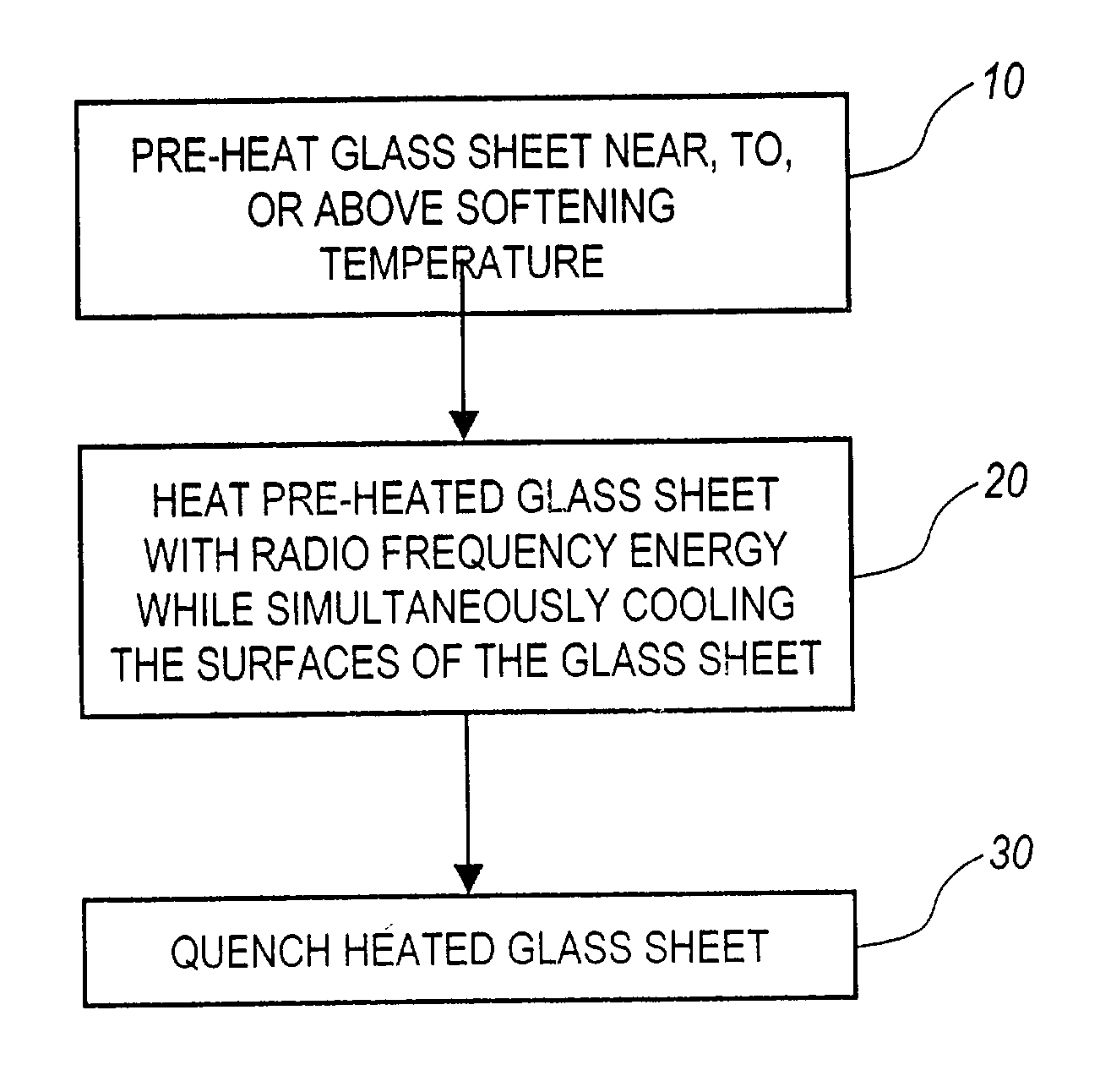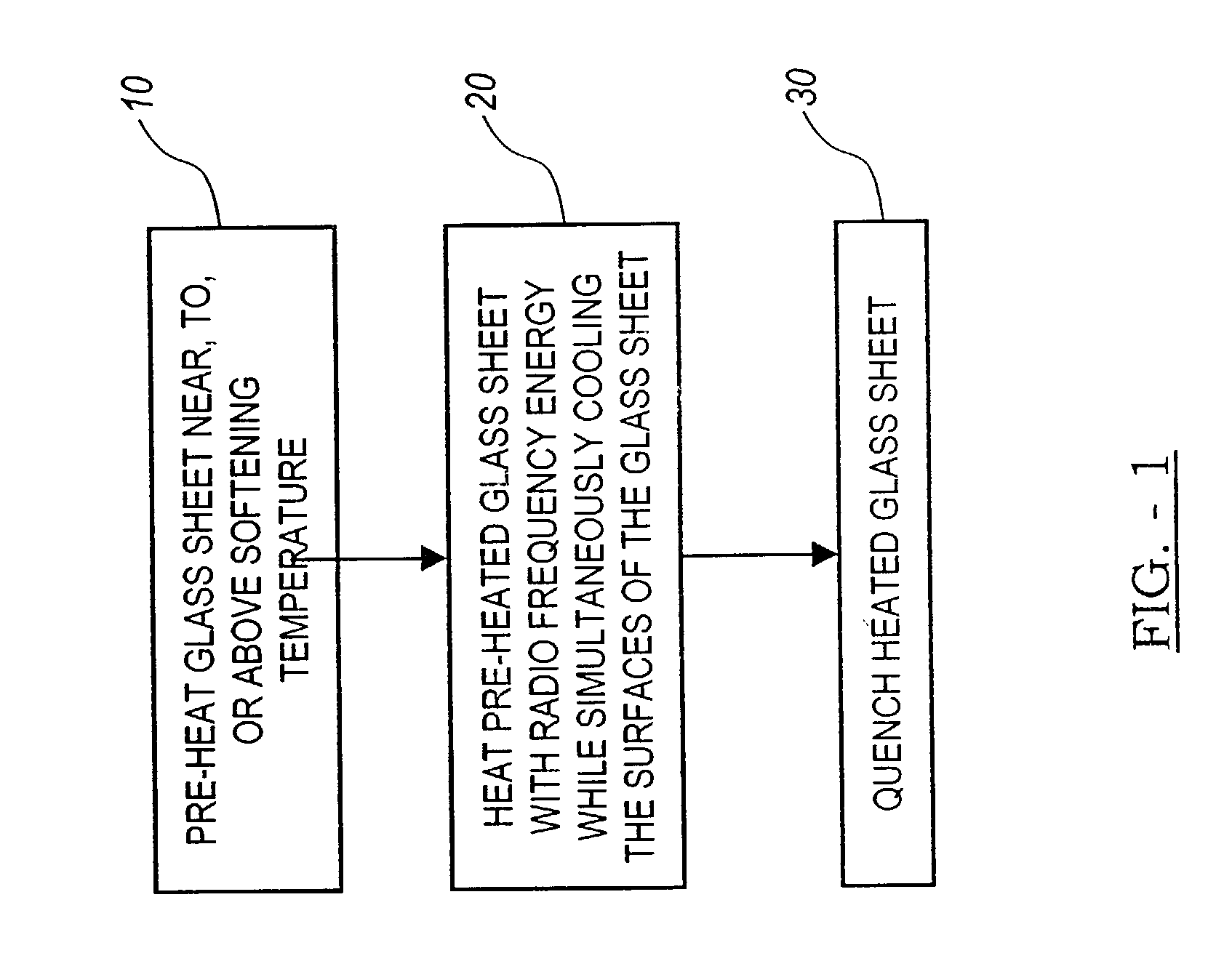System and method for simultaneously heating and cooling glass to produce tempered glass
a technology of heating and cooling glass and tempered glass, which is applied in the field of tempered glass, can solve the problems of large floor space, energy consumption and cost, and large length, and achieve the effect of reducing the number of tempered glass units
- Summary
- Abstract
- Description
- Claims
- Application Information
AI Technical Summary
Benefits of technology
Problems solved by technology
Method used
Image
Examples
Embodiment Construction
)
[0022] Referring to FIG. 1, one embodiment of a method, according to the present invention, is shown for heating, forming, and tempering a glass sheet. Although the method is shown in the figures and described below is used in connection with a glass sheet, it should be appreciated that the method can be used in connection with any suitable glass object.
[0023] The method includes a first step 10 of pre-heating the glass sheet to a temperature substantially at or above its softening temperature, which is typically in the range of about 900.degree. F. to about 950.degree. F. This pre-heating can be accomplished in any number of conventional ways, including heating with infrared energy.
[0024] The method also includes a second step 20 of heating the pre-heated glass sheet with radio-frequency energy while simultaneously cooling at least one outer surface of the glass sheet to treat the glass sheet. For example, one or more air streams directed at the glass sheet can be used to cool the...
PUM
| Property | Measurement | Unit |
|---|---|---|
| Angle | aaaaa | aaaaa |
| Angle | aaaaa | aaaaa |
| Frequency | aaaaa | aaaaa |
Abstract
Description
Claims
Application Information
 Login to View More
Login to View More - R&D
- Intellectual Property
- Life Sciences
- Materials
- Tech Scout
- Unparalleled Data Quality
- Higher Quality Content
- 60% Fewer Hallucinations
Browse by: Latest US Patents, China's latest patents, Technical Efficacy Thesaurus, Application Domain, Technology Topic, Popular Technical Reports.
© 2025 PatSnap. All rights reserved.Legal|Privacy policy|Modern Slavery Act Transparency Statement|Sitemap|About US| Contact US: help@patsnap.com



